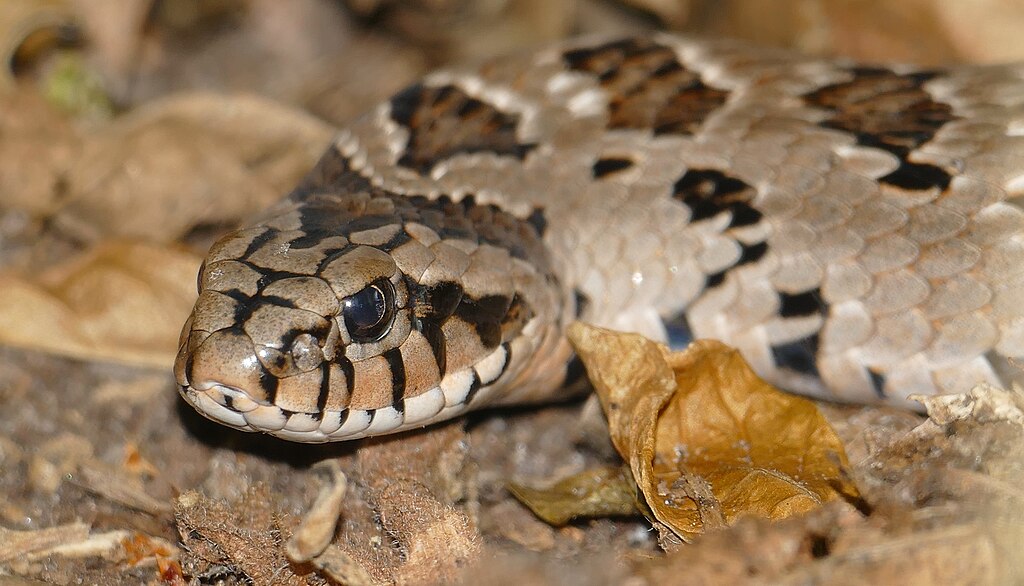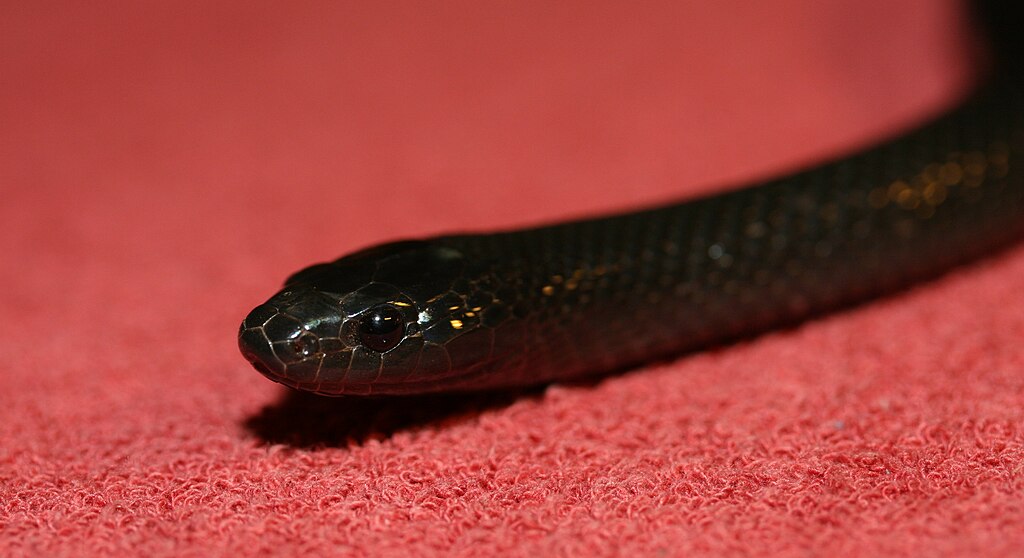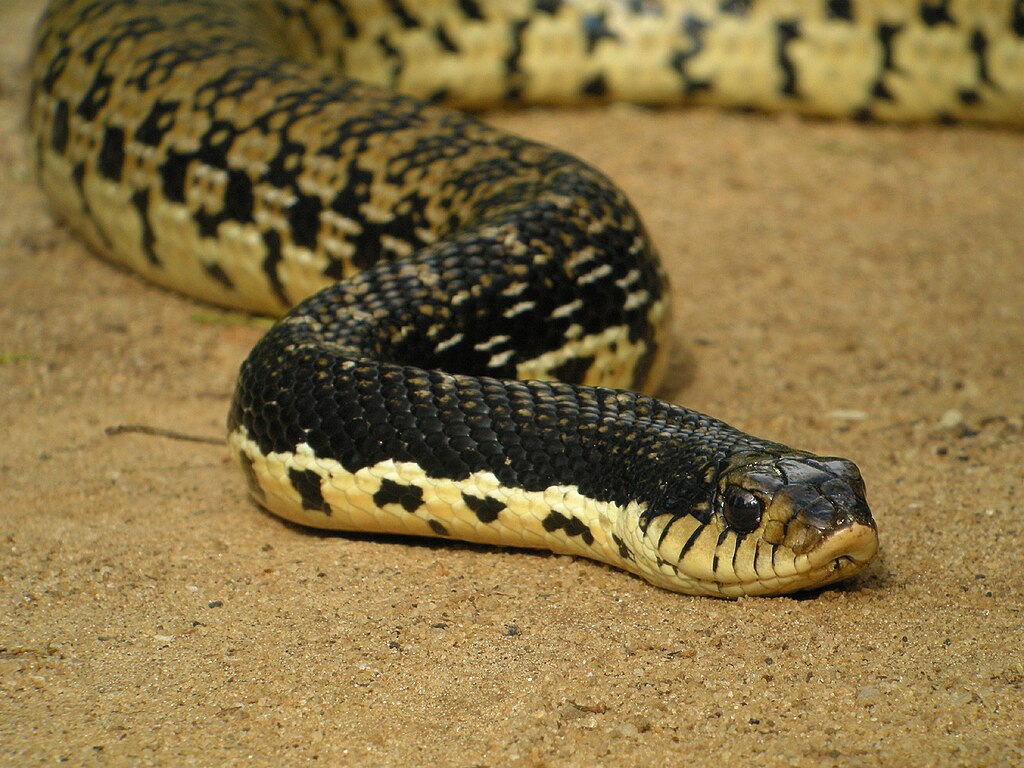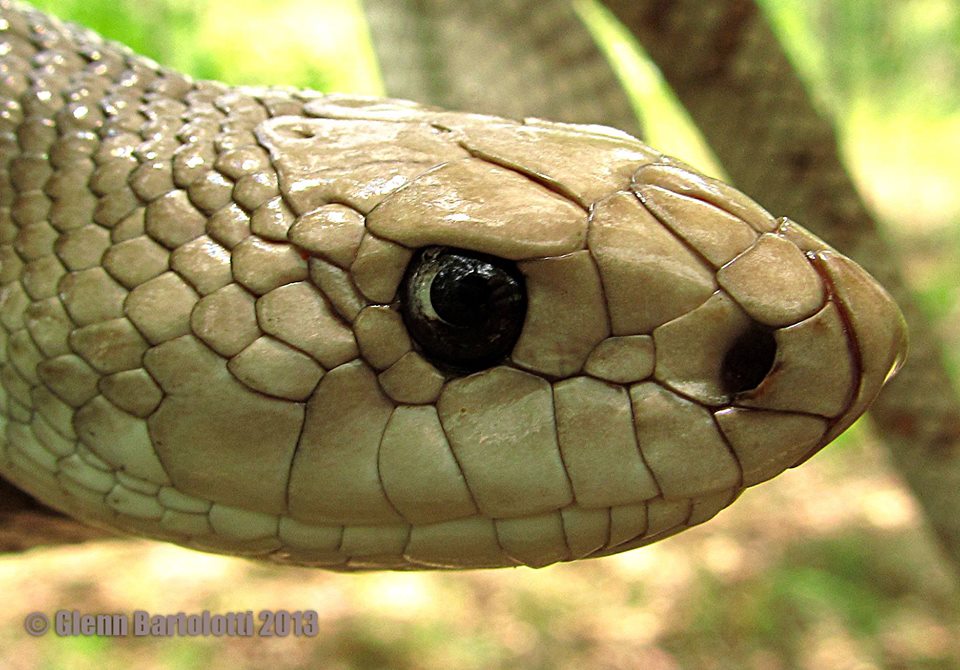Throughout history, humans have been fascinated by animals with seemingly supernatural abilities to predict natural disasters. Among these creatures, certain snake species have gained particular attention for their alleged capacity to sense impending earthquakes. Stories from ancient civilizations to modern rural communities describe unusual snake behavior before seismic events, fueling both scientific curiosity and cultural mythology. While skepticism remains in the scientific community, recent research has begun to shed light on the physiological mechanisms that might allow snakes to detect subtle environmental changes preceding earthquakes. This exploration of serpentine seismic prediction crosses the boundaries between folklore, biology, and geophysics, revealing fascinating insights into both animal behavior and our ongoing quest to understand Earth’s unpredictable movements.
The Historical Connection Between Snakes and Earthquake Prediction

Throughout history, various cultures have documented connections between unusual snake behavior and impending earthquakes. In ancient China, records dating back to 373 BCE describe snakes emerging from hibernation during winter months shortly before major seismic events. Similarly, Greek and Roman texts mention instances where mass snake migrations preceded devastating earthquakes by days or even weeks. These historical observations weren’t limited to the ancient world – Japanese chronicles from the medieval period also noted correlations between snake behavior and seismic activity. The persistence of these accounts across diverse cultures and time periods suggests there may be more than mere superstition at play in the relationship between snakes and earthquake prediction.
The Science Behind Animal Earthquake Prediction

Scientists studying animal earthquake prediction focus on several possible mechanisms that might explain heightened sensitivity to pre-seismic signals. One prominent theory suggests animals can detect P-waves—primary seismic waves that travel faster than the destructive S-waves and arrive earlier. Another hypothesis proposes that certain animals, including snakes, may sense electromagnetic field changes that precede tectonic movement. Changes in groundwater chemistry or the release of gases before an earthquake might also provide sensory cues detectable by reptiles. Most compelling is evidence that some animals can detect infrasound—low-frequency sound waves imperceptible to humans—that might be generated by rock pressure before a seismic event. These scientific explanations provide plausible frameworks for understanding the biological basis of earthquake prediction behaviors.
Chinese Red-Headed Krait: The Most Notable Earthquake-Predicting Snake

Among snake species associated with earthquake prediction, the Chinese red-headed krait (Bungarus multicinctus) has received the most scientific attention. This highly venomous elapid, native to southeastern China and surrounding regions, has been observed exhibiting unusual behavior before several major earthquakes, including erratic movement patterns and emerging from hibernation during inappropriate seasons. Chinese researchers have documented instances where kraits abandoned their burrows en masse days before significant seismic events. Most notably, before the devastating 2008 Sichuan earthquake, wildlife officials reported unusual activity among captive kraits in serpentariums near the epicenter, with the snakes repeatedly striking at enclosure walls and displaying agitated behavior approximately 24 hours before the tremors began. These observations have made the red-headed krait a focal point for research into ophidian earthquake prediction.
Snake Sensory Adaptations That May Detect Seismic Activity

Snakes possess several specialized sensory adaptations that potentially enable them to detect subtle environmental changes preceding earthquakes. Their ventral scales maintain extensive ground contact, creating a highly sensitive system for detecting vibrations and pressure changes in the earth. The snake’s inner ear structure, while lacking external openings, is remarkably sensitive to low-frequency vibrations transmitted through jaw bones and skull structures. Some species also possess specialized sensory organs like labial pits that can detect minute temperature variations that might accompany pre-seismic gas emissions. Additionally, many snakes have exceptional electromagnetic sensitivity through specialized cells that may detect changes in Earth’s electromagnetic field before seismic events. These combined sensory capabilities create a sophisticated detection system potentially capable of identifying early earthquake indicators imperceptible to humans.
The Haicheng Earthquake Prediction Success Story

The 1975 Haicheng earthquake in China represents one of the most successful earthquake predictions in history, with unusual animal behavior—including snake activity—playing a crucial role. In the weeks preceding the 7.3 magnitude quake, local officials received numerous reports of snakes emerging from hibernation despite freezing winter temperatures, with some even freezing to death on snow-covered ground. Combined with other anomalous animal behaviors and scientific measurements, these observations prompted authorities to evacuate the region hours before the earthquake struck. This evacuation saved thousands of lives and brought international attention to the potential value of animal behavior in earthquake prediction. The Haicheng case remains particularly notable because it represents a rare instance where animal-based prediction indicators were officially incorporated into emergency response decisions with positive outcomes.
Scientific Studies on Snake Behavior Before Earthquakes

Modern scientific investigations have attempted to verify and explain the connection between snake behavior and seismic activity through controlled studies. Researchers at the Nanjing Earthquake Bureau maintain a specialized facility where captive snakes are continuously monitored via video surveillance to document behavioral changes that might correlate with seismic events. A notable 2010 study published in the Journal of Seismology analyzed five years of snake behavior data, finding statistically significant correlations between unusual activity patterns and earthquakes above magnitude 3.0 within a 100-kilometer radius. Similar research at Taiwan’s National Central University has utilized accelerometers attached to captive snake enclosures to quantify activity levels, revealing increased movement up to five days before nearby tremors. While these studies suggest genuine connections, scientists emphasize the need for larger sample sizes and standardized monitoring protocols to establish conclusive relationships.
Biological Mechanisms of Seismic Sensitivity in Snakes

Researchers have proposed several biological mechanisms that might explain snakes’ apparent seismic sensitivity at the cellular and physiological levels. One leading theory involves mechanoreceptors—specialized sensory cells embedded throughout snake skin that detect minute physical disturbances and pressure changes. These receptors may be sensitive enough to detect the subtle ground deformations that precede major earthquakes. Another hypothesis focuses on the vestibular system in snakes’ inner ears, which contains fluid-filled chambers with hair cells that respond to motion and vibration at extraordinarily low thresholds. Some biologists suggest that certain snake species might possess specialized voltage-gated calcium channels in their nervous systems that respond to electromagnetic field fluctuations associated with tectonic activity. These biological mechanisms could work in concert, creating a multi-sensory earthquake detection system far more sensitive than current human technology.
Cultural Beliefs About Snakes and Earthquakes

Across numerous cultures, snakes figure prominently in earthquake mythology and folklore, often embodying forces capable of triggering or predicting seismic events. In Hindu mythology, the cosmic serpent Shesha supports the world on its hood, with earthquakes occurring when it shifts position. Japanese folklore features the giant catfish Namazu, restrained underground by a snake deity whose momentary inattention allows the catfish to thrash and cause earthquakes. Indigenous cultures throughout the Americas have traditions connecting serpent behavior to earth movements, with the Hopi describing underground serpent spirits whose movements shake the ground above. These cultural narratives, while metaphorical, may preserve ancestral observations of actual snake behaviors before earthquakes. The global prevalence of snake-earthquake connections in folklore suggests these associations may stem from genuine historical observations rather than coincidental symbolism.
Challenges in Validating Snake Earthquake Prediction

Scientific validation of snakes’ earthquake prediction abilities faces numerous methodological challenges that complicate research efforts. The rarity and unpredictability of significant earthquakes make controlled studies extremely difficult, as researchers cannot reliably schedule observations around seismic events. The potential for confirmation bias presents another obstacle—unusual animal behaviors occur regularly for various reasons, but may only be noticed or reported when they precede earthquakes. Environmental factors like seasonal changes, barometric pressure fluctuations, or human activity can trigger behaviors that mimic supposed pre-earthquake responses. Additionally, the lack of standardized behavioral metrics makes it difficult to establish what constitutes truly “unusual” snake behavior across different species and environments. These challenges highlight why, despite centuries of anecdotal evidence, snake earthquake prediction remains scientifically controversial despite compelling individual cases.
Modern Earthquake Prediction Technologies vs. Animal Sensing

Contemporary seismology employs sophisticated technologies for earthquake monitoring, raising questions about whether animal detection methods offer any advantages over instrumental approaches. Modern seismic networks utilize sensitive seismographs, GPS measurements of ground deformation, groundwater chemistry monitoring, and satellite observation of crustal movements—yet despite these advances, reliable earthquake prediction remains elusive. Animal detection systems potentially offer complementary capabilities by responding to subtle environmental changes that current instruments might miss or cannot measure. Some scientists propose that snakes and other sensitive animals might detect combined signals—minute ground movements, gas emissions, electromagnetic changes—that no single instrument can comprehensively monitor. In recent years, interdisciplinary collaborations between biologists and geophysicists have explored integrating animal behavioral monitoring with traditional seismic networks, recognizing that biological systems refined over millions of years of evolution might complement technological approaches to earthquake forecasting.
Notable Recent Cases of Snake Earthquake Prediction

Several recent earthquake events have been preceded by documented cases of unusual snake behavior, reinforcing interest in ophidian seismic prediction. Before the 2011 Tōhoku earthquake in Japan, pet shop owners in coastal regions reported nocturnal snake species becoming active during daylight hours approximately 12 hours before the magnitude 9.1 quake struck. In 2017, prior to a 6.5 magnitude earthquake near Jiuzhaigou, China, local nature reserve staff documented several species of snakes abandoning underground dens and climbing trees—behavior highly unusual for the season and time of day. Perhaps most compelling was a 2019 incident in Sulawesi, Indonesia, where wildlife officials had videotaped unusual congregating behavior among reticulated pythons three days before a significant earthquake struck the region. While these cases remain anecdotal rather than controlled observations, the consistency of reports across different geographic regions and snake species continues to intrigue researchers studying biological earthquake precursors.
Future Directions in Snake Seismic Sensitivity Research

The future of research into snakes’ earthquake prediction abilities focuses on several promising directions combining biological understanding with modern technology. Miniaturized accelerometers and activity trackers attached to wild snakes could provide objective movement data to correlate with seismic events while allowing normal behavior in natural habitats. Some researchers are developing multi-sensor arrays in serpentariums that simultaneously monitor snake behavior alongside environmental factors like air ionization, gas emissions, and electromagnetic fluctuations to identify which specific pre-earthquake phenomena trigger behavioral responses. Genomic studies are examining whether certain snake species possess genetic adaptations enhancing sensitivity to seismic precursors, potentially identifying specific receptor genes associated with heightened detection abilities. Collaborative networks between herpetologists and seismologists are also being established in seismically active regions to standardize observation protocols and create global databases of animal behaviors preceding earthquakes. These interdisciplinary approaches may finally provide definitive answers about snakes’ earthquake prediction capabilities.
Practical Applications: Can Snake Behavior Help Save Lives?

While scientific debate continues, some regions have begun integrating animal behavior monitoring, including snake observations, into broader earthquake early warning systems. In parts of China, local earthquake bureaus maintain “animal observation networks” where unusual behaviors, including those of captive snakes, are reported to central monitoring stations and considered alongside instrumental data. Though rarely used as sole prediction indicators, these biological observations can trigger increased vigilance of instrumental networks during periods of unusual animal activity. Some municipalities in Japan and Taiwan have established citizen reporting systems where unusual wild or pet snake behaviors can be documented and assessed by seismologists. The potential value of such systems lies not in replacing technological monitoring but in providing complementary biological indicators that might extend warning times beyond what current instruments alone can provide. Even if these systems provide only minutes of additional warning, the potential life-saving benefits in densely populated seismic zones remain significant.
The connection between snakes and earthquake prediction represents a fascinating intersection of ancient wisdom and modern science. While conclusive evidence remains elusive, the accumulation of historical records, eyewitness accounts, and preliminary scientific studies suggests there may be genuine substance behind the folklore. As research methods become more sophisticated and interdisciplinary approaches expand, we may finally determine whether these remarkable reptiles truly possess an ability to sense impending seismic events. Whether their unusual behaviors ultimately prove to be reliable earthquake predictors or simply coincidental phenomena, the investigation itself has valuable scientific merit—potentially revealing new insights into both animal sensory biology and the subtle environmental changes that precede earthquakes. In our technologically advanced world, nature’s own warning systems, refined through millions of years of evolution, may still have much to teach us about living safely on our geologically active planet.





